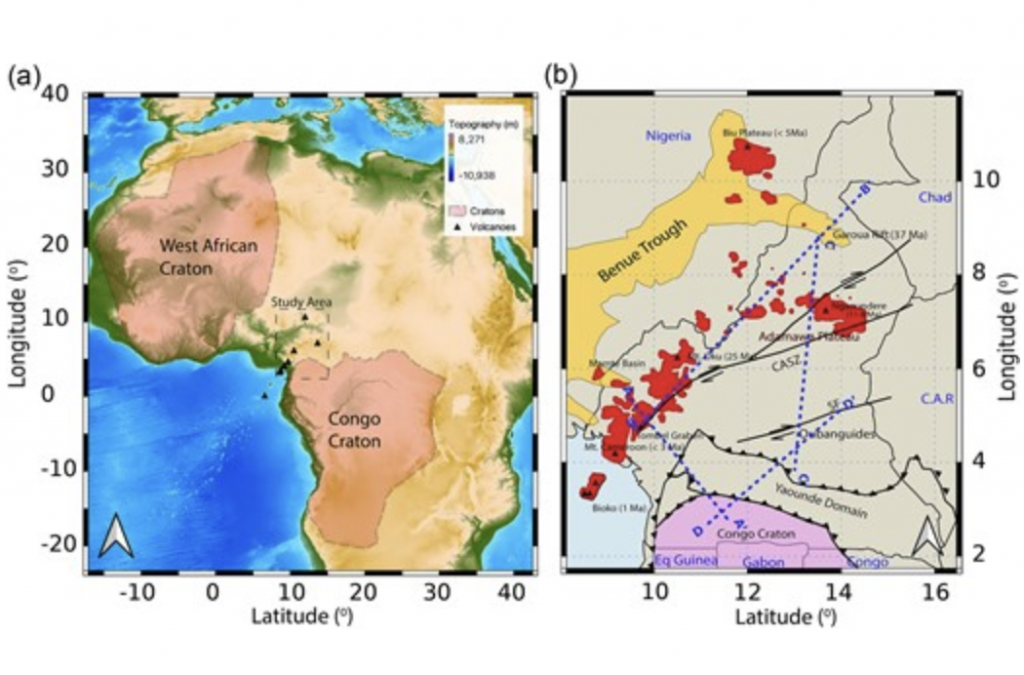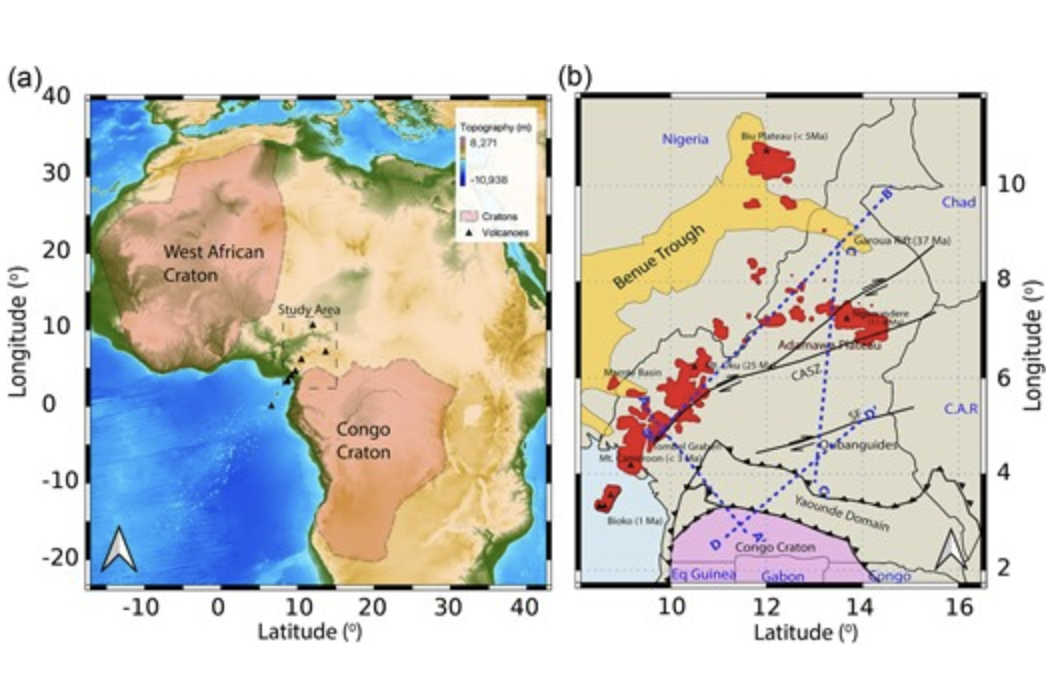The Cameroon Volcanic Line (CVL) and other tectonic features in Cameroon remain enigmatic, prompting ongoing debates about their detailed crustal structure, composition and geodynamic evolution. To shed light on the structural complexities and the underlying crustal processes, we leverage the two-step ambient noise tomography method to obtain the 3-D shear wave velocity (Vs) and the P-to-S wave speed ratio (Vp/Vs) structure of the crust beneath Cameroon. We start by cross-correlating data recorded at 32 broad-band stations from February 2006 to February 2007 to extract Rayleigh wave group dispersion curves on interstation paths. First, we invert these dispersion curves to obtain group velocity maps across different periods (5–30 s) on a regular grid (0.5o × 0.5o). We then invert the group velocities on each grid node to derive Vs and Vp/Vs as a function of depth. Specifically, we leverage a new evolutionary algorithm called Competitive Particle Swarm Optimization to tightly constrain Vs and Vp/Vs ratios beneath the CVL and surrounding regions. Our inversion results show an anomalously low Vs of ~3.6 km s−1 in the uppermost crust beneath active volcanic provinces. This low Vs and a high Vp/Vs ratio suggest a mafic composition, possibly due to mafic volcano-plutonic melts driving Cenozoic to modern magmatic activity. Our findings reveal a prominent high-Vs structure at 25–35 km depth, in alignment with the CVL. Characteristic properties, such as the maximum Vs of ~3.9 km s−1 and Vp/Vs in the range of 1.85–1.88, suggest the presence of cooled mafic materials that have intruded the crust. Our depth cross-sections along the CVL indicate that these mafic intrusions are ubiquitous along the entire CVL. They are spatially separated from the volcano-plutonic structures by a thin middle crust with a Vs of ~3.7–3.8 km s−1 and a Vp/Vs of 1.70. These properties are indicative of a felsic to intermediate crust, which may be linked to the Neoproterozoic Pan-African Orogeny. We posit that this thinned low Vp/Vs structure may have facilitated the ascent of mafic material, contributing to recent volcanic activity in the region. Conversely, beneath the Oubanguides belt and the Congo craton, these low Vp/Vs structures appear thicker, with mafic intrusions at greater depths. This structural feature suggests a dynamic process involving the pushing and exhumation of lower crustal material by the mafic material. Our images further suggest that an intriguing interaction of crust with deeper structures may be responsible for the intrusions and volcanism observed along the CVL. The findings advance our understanding of the geological and geodynamic complexities associated with the CVL and its origin.

Satyam Pratap Singh, Simanchal Padhy, Vipul Silwal, A High-resolution 3-D Shear Velocity Model for Cameroon using Ambient Noise Tomography: Constraints from the CPSO algorithm, Geophysical Journal International, Volume 242, Issue 2, August 2025, ggaf227, https://doi.org/10.1093/gji/ggaf227
![]()

